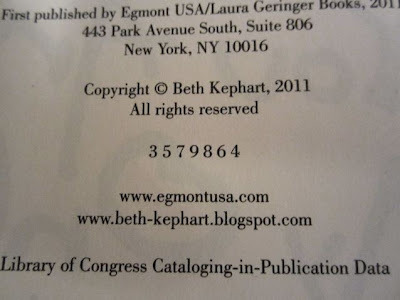Beth Kephart's Blog, page 199
February 17, 2012
Talking about William from Dangerous Neighbors
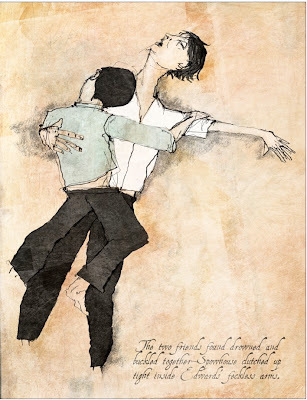
For much of last year I worked on a book that took me deep inside the world of 1871 Philadelphia—the clank of Baldwin machines, the boats on the Schuylkill, the innards of Eastern State Penitentiary, the rattle of a newsroom, the world of William, first introduced in Dangerous Neighbors.
I wrote a book. My husband made drawings. And then I stood back and thought. What next?
Today I am having a preliminary meeting about this book of mine, this character I love, this Philadelphia to which I will always be true. I don't know what will happen, but I do know this: Sometimes we have to step away to know what it is we should be stepping toward.




Published on February 17, 2012 04:26
February 16, 2012
I dare you, I tempt you

Patricia Hampl's I Could Tell You Stories: Sojourns in the Land of Memory remains, for me, the best book on the topic, even all these years later. My students are reading the first two chapters this week. They'll find passages like this one:
Maybe a reader's love of memoir is less an intrusive lust for confession than a hankering for the intimacy of this first-person voice, the deeply satisfying sense of being spoken to privately. More than a story, we want a voice speaking softly, urgently, in our ear. Which is to say, to our heart. That voice carries its implacable command, the ancient murmur that called out to me in the middle of the country in the middle of the war—remember, remember (I dare you, I tempt you).




Published on February 16, 2012 04:56
February 15, 2012
Join April Lindner, Doug Gordon, and Me for a night at Musehouse
Published on February 15, 2012 08:26
the peace-ability of Tuesdays at Penn

How unlike (one from the other) my students are.
How whole they are together, in that classroom.
I take the peace-ability of our Tuesdays home with me. It rides the train. It walks past the trailing sun. It enters into my house, and it exhales here.




Published on February 15, 2012 05:42
February 14, 2012
Land that I love: Celebrating Monica Kulling's Ode to Francis Scott Key on Valentine's Day
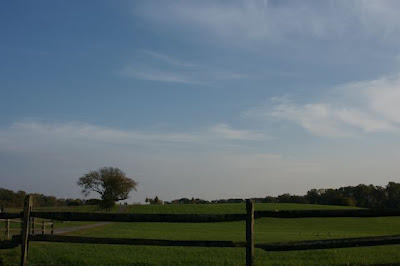
We are thinking about the things we love on this fine Valentine's Day, and you know how much I love all of you. I love, too (and of course) my boys, my family, my friends, my students. I love the books that others write, the music that others sing, the dances that I watch, edge-of-my-seat style, the gardens that grow and the gardeners who grow them, the neighbors I find when out taking my walks, my church peeps who make me laugh, well... you get the idea. There's a lot of loving to do, and I'm happy to be alive to do it.
But I also love this country, and today I am celebrating a Valentine written to these United States of America by one Monica Kulling, a prolific and talented children's author who happens to reside in Toronto. Monica's most recent book is a Step 3 Random House selection entitled Francis Scott Key's Star-Spangled Banner. Endearingly illustrated by Richard Walz, this is the story of that lyricist lawyer who lived with his wife and eleven children near the Potomac River and found himself, during the Battle of 1812, on a British boat arguing for the release of an American doctor friend. Key won his argument. And yet, when it was time to leave the British boat and sail back to his harbor, Key was forced to remain among the Brits, who were launching their attack on Baltimore.
That attack lasted 25 hours, Monica tells us, and in the early morning light there was so much smoke that Key, staring through a spyglass, could not see if the American flag still few above the beseiged fort. When the smoke cleared, the flag was there. The rest is not just history, but a song. And not just any song: an anthem.
By telling this story with clarity and tenderness, Monica gives young readers a sacred history—and restores lost details to the adults who read along. This was the perfect book for me to sit with today as I reflected on all I love and how blessed I am.




Published on February 14, 2012 06:23
February 13, 2012
Web of Angels/Lilian Nattel: Reflections
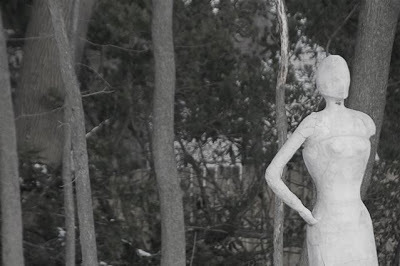
I have never met Lilian Nattel, but I feel I know her. The rink where she skates. The sound of her kids' laughter. The way she sees the world in which she lives. The photographs that thrill her. I read and loved her international sensation, The River Midnight. I celebrated when her new book, Web of Angels, was bought by Knopf Canada. I was honored, a few short weeks ago, when a copy showed up in my mailbox. I opened to the first page. I was stunned by the opening lines. I thought I knew Lilian Nattel. But new books teach us new things about a writer's powers.
I have never read a book like this one. You haven't either. It's brave, unblinking, categorically generous despite a most heartbreaking subject matter. With Web of Angels, Lilian isn't just exploring dissociative identity disorder—a condition that affects far more "ordinary" human beings than I had previously known. Lilian is inhabiting the mind of a woman in whom multiples live, which is to say that she is teaching us what it is like when several personalities—male and female, young and middle aged—argue for space inside the same body.
Sharon Lewis lives in a pleasant Canadian community called Seaton Grove. She is a mother of three, a loved wife, a friend. For years she has battled back the divisions in her own mind, but when a pregnant neighborhood teen kills herself and secrets begin to unravel, Sharon Lewis unravels, too. She blacks in and out of the familiar and strange. She struggles to save the dead girl's sister from a terrible and too-familiar haunting. To save the girl, she'll have to reveal her true selves. She'll have to rely on them to help her piece together truth.
There are big themes in this book. Big ideas. But what makes the whole so spectacular is how Lilian cushions the ugly things inside a beautiful, resilient domestic world. As awful as the secrets are, Web of Angels thrives because of the way that Lilian tells the tale. Those searing household details. Those absolutely true snatches of conversation that happen among kids, between adults, inside the quiet of a therapist's room. It's not just the first page of this book that is so beautifully written. It's every page.
For example:
The baby's eyes were unfocused, her gaze not following theirs but open, large, taking in the light around objects as much as the objects themselves, for she was still closer to the source of life than the material world.
I know you want more. I will satisfy your craving:
Pipes rattled upstairs as water flushed down, flowing into larger pipes laid underground a hundred years ago when Seaton Grove's bylaws stipulated that no whole sheep or hogs or geese were allowed to run free in the streets on pain of a ten-cent fine. Before that the roots of a forest intertwined and Garrison Creek flowed between ferns. Now pipes connected the houses on either side, across the street, around the corner, their sewage led far away. That was how civilized people handled sh*t: pipe it; bury it. And they sacrificed the creeks, the streams, the living waters in order to do it, their land dry and quiet except for the sound of the sprinklers.
Web of Angels is due to be released in just a few weeks. I urge you to consider spending time with this novel, and while you wait, please spend time here, on Lilian's web site, where I learned a lot listening to Lilian talk about this real and painful disorder.




Published on February 13, 2012 15:35
not yet arrived: consoling words from Rebecca Solnit

Up since four with my students' work—their expectations essays, their prose poems on the color of life. Blue factors in, theatrical skies. Declarations and near opinions are wrestled onto the page.
But there are questions, too, and that is right: We as writers are always only just starting out, incessantly finding our way. I wanted proof of this—or not proof, but consolation—and so I turned to this passage from Rebecca Solnit's "Open Doors."
Certainly for artists of all stripes, the unknown, the idea or the form or the tale has not yet arrived, is what must be found. It is the job of artists to open doors and invite in prophesies, the unknown, the unfamiliar; it's where their work comes from, although its arrival signals the beginning of the long disciplined process of making it their own.




Published on February 13, 2012 06:31
February 12, 2012
quince, the Grammys, the artists of Chanticleer
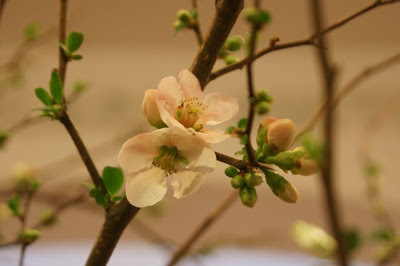
For an exhibit of the extraordinary furniture and furnishings made by the gardeners of Chanticleer, Jonathan, a gardener I have always loved, forced, among other things, quince. So that it bloomed today among the many admirers at the Wayne Art Center. It bloomed, a centerpiece in a room of art among people who love growing things.
Leave it to Jonathan to make one of my favorite flowers come to life on the coldest day thus far of this year.
I have been working since 3 this morning (not the whole day, but most of it) —and still I am egregiously behind. I will take my tax-year receipts to another room now so that I can watch Adele sing and remember Whitney and fall head over heels (one more time) with the one and only Bruce.




Published on February 12, 2012 15:40
February 11, 2012
the birds knew the snow was coming
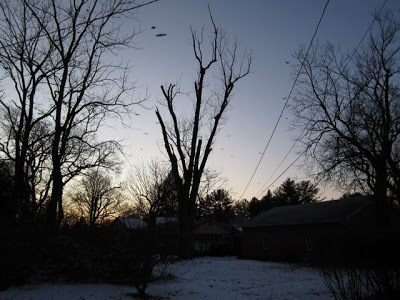
and I have been grateful for the white—the excuse it gives not to rise as early, not to press forward so hard. I printed the first 116 pages of my Berlin book instead of doing all the other things I'd planned for the day. I sat down and read.
I can write forward now, more peaceful than I'd been.




Published on February 11, 2012 09:16
The YOU ARE MY ONLY third printing arrives
Published on February 11, 2012 05:44




